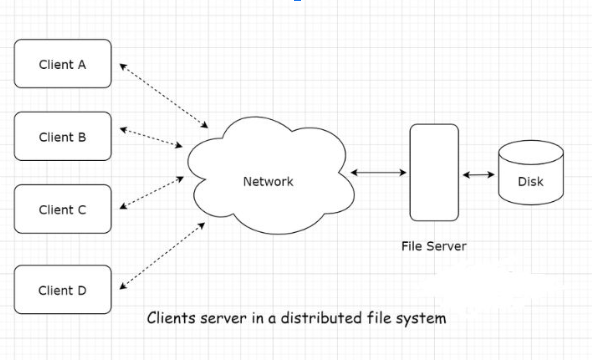The digital world is updating itself with every passing second. The addition of new technologies like Network File System (NFS) and modifications is not a big deal, nowadays. The global village is working to build a nexus that joins people from all corners of the world.
The network system was facing storage problems and inefficient file protocols use of floppy disks which made errors inevitable. The solution to all this was provided as NFS. It was developed by Sun Microsystem in 1984.
An Outline Of Network File System (NFS):
The network system (NFS) is an access protocol that can be defined as a distributed file system protocol. It is an outspread protocol that provides message configuration and a better communication network between client and server over different networks.
The remote files can be received over networks using this system and can be treated as local documents. It has resolved problems like duplication and also improved central storage and utilization of resources.
The productivity of computing is increased using this system by simplifying management and increasing connections. It is especially beneficial for organizations working in an integrated environment.
The network file system follows a Client and Server model while operating. The model has the following components:
The working of NFS:
The operation of the system follows the client server model, which is efficient for use in multiple distributed environments.
The server of the model:
The server can be defined as the central computer or system that hosts the shared files and directories. Its basic responsibility is to store data and enable its accessibility to the clients over networks. The NFS server permits remote computers to access and work on the stored files.
Basic functions of the (NFS) server:
- File management
- Sending and sharing directions to clients
- verification of client requests
How Network File Server can be operationalized in the System:
- Install Linux system is required to install the server package
- Set up a direction and assign required permissions.
- Share the directions and start the server.
Benefits of the server:
It ensures centralized data management storing all files in one location, clearing backups, and updates, and managing data on the whole.
It reduces duplication of files across various systems and users can work efficiently with a single copy on the server.
Collaboration is enhanced and a large number of users can get access to files in no time, especially in different organizations.
Client in System:
The computer or system that connects to the server and gets access to the shared files or directories is called a client. The shared files will be stored on the client’s system. The client is directed to organize shared directions and files by the server and store these as local files.
Basic functions of the client:
- It is directed to send file requests to the server.
- It stores received files in the system.
- It maintains consistency, managing the synchronization of received files with the server.
How to Set Client in the System:
We have to install the NFS client package in the sharing system, create a mount point, and organize the shared directory. This will need particular coding to install the NFS client in the system.
Different Versions of System:
The system went through numerous modifications and has a large number of versions from year 1985 to 2024. The most recent version available is NFSv2.
Implementation of Distribution Protocol System:
Modern operating systems like Unix and Linux can implement this system for cloud storage. The other operating systems like Windows can also use this system. All the devices that are attached to the host server of the system can receive and share files with accuracy and security.
Benefits Of the system:
This system (NFS) is useful for all devices and for different operations including large amounts of confidential data and files. It is mostly beneficial for sharing files across networks making it essential for organizations that require consolidated storage and effective teamwork. It eliminates chances of errors and a large number of users to work together efficiently without file duplication and redundancy.
This system is not only confined to UNIX and Linux systems although it is mostly used there. It is also available for other operating systems like Windows. The system is easy to use and can be upgraded according to the requirements of users and also provides a facility for file locking.
Limitations of the system:
Security challenges: security is always a concern for users one of the limitations of this system in its early versions was security making it vulnerable to unauthorized access.
Dependent on the network: The internet strength determines the performance of the system as it depends on network efficiency.
Unavailability of native encryption: The data that is transferred via this system cannot be natively encrypted.
Large Environments: This system can be managed easily in smaller environments while it will be hard to manage in more complicated and large environments.
Like all other technologies have certain limitations and drawbacks, similarly this system also has like security concerns and reliance on networks. One should keep all these considerations in mind while opting for the use of this system.
Conclusion:
The network file system (NFS) is a distributed file system protocol that works in multiple layers and allows users to share, and store numerous data and files over multiple networks. It is easy to set up and allows for sharing of data without file duplication, errors, and redundancy.it is highly useful for organizations working in collaborative environments.
All the developments in technology come with pros and cons in the same way this system also has certain disadvantages like dependency on the network and certain security concerns.



